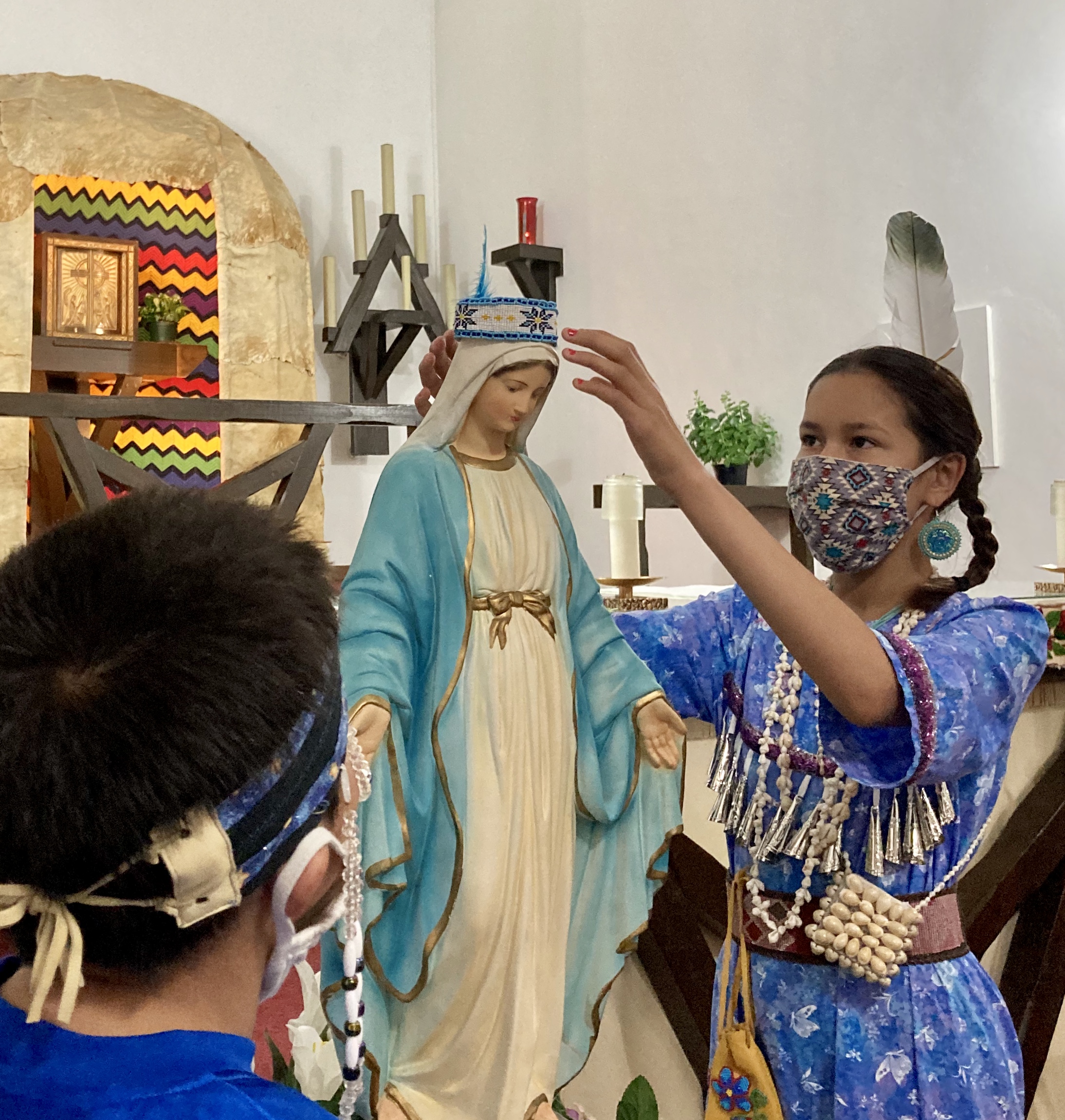
Gabriella Grover crowns Mary with a traditional Ojibwe crown for the annual May crowning at St. Francis Solanus Mission Church in Reserve. A wigwam encloses the tabernacle and traditional beadwork adorns the altar in the sanctuary. (Catholic Herald photo by Jenny Snarski)
Jenny Snarski
Catholic Herald Staff
Sr. Felissa Zander learned about Kateri Tekakwitha when she was in grade school at St. Francis Xavier School in her hometown of Cross Plains. She couldn’t imagine then where she finds herself now and how her path would cross with the Native saint.
A St. Kateri shrine can be found on the grounds of the mission in Reserve, where Sr. Felissa lives with fellow School Sister of St. Francis Sr. Maryrose Theobald. The church and school community at St. Francis Solanus Mission parish hold an annual celebration for her feast. Sr. Felissa was also privileged to travel to Rome for the canonization of St. Kateri in 2012.
Since 1984, Sr. Felissa has attended the National Tekakwitha Conference, and she enjoys meeting the same tribal members each year as well as new ones.
She has great appreciation for the Ojibwe culture and traditions of families and students she serves. She and Sr. Maryrose carry on the gift shop, dating back to 1900, which the School Sisters started as an outlet for the Ojibwe to sell their beautiful crafts, with proceeds helping to fund the education of students.
Families from the reservation continue making beaded and handcrafted items, from one generation to the next.
Although both she and Sr. Maryrose were given the honor of receiving Ojibwe names many years ago, Sr. Felissa identifies more with her nickname, “Sr. Many Moons,” because she has never told any of her students her age.
Sr. Maryrose’s Ojibwe name is “Manidos Gitijenikwe,” meaning “The Creator’s Keeper of the Gardens.” Sr. Felissa’s Ojibwe name is “Mandakwe,” which means “Wonder Woman.”
She learned prayers in the language many years ago and continues to teach them and pray them with the school children – in particular the Sign of the Cross, the Our Father, Hail Mary, Prayer for the Poor Souls and meal prayers.
Even with dwindling numbers of students in the school – 119 at its highest before the Lac Courte Oreilles tribal school was opened in 1975, and currently 13 – Sr. Felissa believes just as stoutheartedly in their teaching and accompanying mission.
“Our Lord only worked with 12,” she says, “So we just work with those God gave us.”
In addition, the sisters teach catechism to students who attend the tribal school, including throughout the summer months, if needed.
“The children are always a blessing,” Sr. Felissa shared. “I try to stimulate them to have a hunger for God, choose to live a spiritual, holy life. Heaven is to be their goal in everything they do.”
